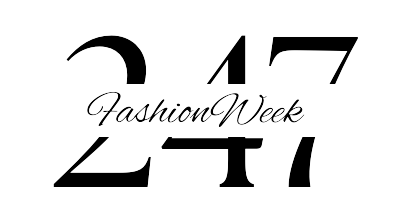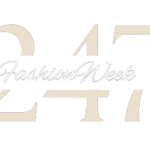Fashion encompasses popular styles, trends, and aesthetics in clothing, accessories, and personal style. It is a means of self-expression, allowing individuals to communicate their identity and cultural affiliations through their outward appearance. Fashion is dynamic and influenced by various factors, constantly evolving and reinventing itself. It has a significant impact on industries, economies, and individual lives, shaping cultural identities and reflecting societal values. Fashion is a powerful tool for self-expression, creativity, and personal style, enabling people to showcase their unique identities and aspiration.
Fashion is important for women as it enables them to express their individuality, creativity, and personal style. It serves as a platform for self-expression and empowerment, allowing women to communicate their identity and values. Fashion boosts women’s confidence and self-esteem, making them feel good about their appearance and enhancing their self-image. It promotes inclusivity and celebrates diversity, encouraging women to embrace their unique features and express their beauty through fashion choices. Fashion is also a form of self-care, providing joy, creativity, and personal fulfillment. Moreover, it has significant economic and social impacts, driving employment opportunities and fostering innovation within the industry. Ultimately, fashion empowers women to be their authentic selves and positively impacts their overall well-being.
Ethics In Fashion
Life is full of ethical dilemmas, and the fashion industry has its share of controversy around ethics. All one has to do is read or watch the news to find examples of ethical issues in the fashion field. The ethics are listed here,
- Knockoffs, Copies and Counterfeits
- Sweatshops
- Blood Diamonds
- Animal Products
Knockoffs, Copies, and Counterfeits
In this industry gray-market, knockoff, and counterfeit merchandise is a significant problem. The gray-market goods which are authentic goods. Knockoff items use another item as inspiration and are considered imitations nut not the real thing.
Counterfeit merchandise – copies of items, intended to defraud the consumer- is another problem. Counterfeit goods are illegal because they violate trademarks and intellectual property laws.
Sweatshops
A sweatshop refers to a workplace, typically in developing countries, where workers, often underpaid and subjected to poor working conditions, produce garments and accessories. Sweatshops are characterized by long hours, low wages, lack of labor rights, health and safety hazards, and sometimes even forced labor. These facilities prioritize profit over the well-being and rights of workers, leading to ethical concerns within an industry.
Sweatshops exploit workers, often in developing countries, through poor working conditions and low wages. They highlight the need for ethical and sustainable practices to ensure the well-being and dignity of those involved in the production process. Work environments that endanger the physical and mental welfare of employees.
Blood diamonds
The diamonds are mined and sold by insurgents or the party attempting to overthrow the current regime, and slaves are used to mine the diamonds.
The term “blood diamond” emerged because the sale of these diamonds has been used to finance armed conflicts, civil wars, and oppressive regimes, resulting in the suffering and exploitation of innocent people. The diamond trade has taken steps to address this issue through the Kimberley Process, which aims to ensure that diamonds are sourced ethically and do not contribute to violence or human rights violations.
Animal products
Animal products refer to materials derived from animals that are used in the production of clothing, accessories, and footwear. These materials include fur, leather, wool, silk, and exotic skins. While animal products have been traditionally used in fashion due to their durability, aesthetic appeal, and functionality, their use has raised ethical concerns.
The use of animals is an ethical issue due to the treatment of animals, which is frequently cruel and painful. Birds and other animals have a long history of use in fashion. In fact, The metropolitan museum of Art devoted an entire exhibition to the use of skins, furs, feathers, and animal prints in its exhibition “Wild: Fashion Untamed”.
Fashion without compassion:
Compassion refers to the ethical and empathetic approach towards the production, sourcing, and consumption of fashion products. It encompasses a deep concern for the well-being of humans, animals, and the environment throughout the entire supply chain.
Feather “hair extensions” are roosting upon manes across the nation. A trend popularized by celebrities such as Miley Cyrus, adding plumage to one’s coiffure is now such a coveted fashion statement that one internet company even sells feather extensions for dogs. But, where do these lovely feathers come from before feathering your own locks, please consider the thousand of innovative lives which are taken to produce these plumes.
Overall, compassion reflects a desire to create a fashion industry that prioritizes the well-being of all stakeholders, including workers, animals, and the planet. It emphasizes empathy, ethical choices, and a commitment to creating positive change within the industry.
Frequently Asked Questions!!!
Why people want to be fashionable?
Fashion brings people together and fosters a sense of community. Events like fashion shows, industry gatherings, and online fashion communities provide opportunities for fashion enthusiasts to connect, share their passion, and discuss trends and styles.
How about future scope in fashion?
The future scope of fashion holds several exciting possibilities driven by technological advancements, sustainability concerns, and shifting consumer expectations.
3- Heartwarming Facts about Fashion
-
- The Little Black Dress: The iconic “Little Black Dress” (LBD) is a staple in many women’s wardrobes. It gained widespread popularity thanks to the influential fashion designer Coco Chanel. In 1926, Chanel introduced a simple, versatile, and elegant black dress in Vogue magazine, predicting that it would become a fashion trend. Her prediction turned out to be accurate, as the LBD became a timeless and essential piece in women’s fashion, suitable for various occasions.
-
- The Origin of High Heels: High heels have a long history that dates back centuries. They were initially worn by men. In the 16th century, Persian cavalrymen started using heels to secure their feet in stirrups while riding horses. The trend eventually spread to Europe and evolved into a symbol of status and authority. Over time, high heels became associated with femininity, and today they are predominantly worn by women.
-
- The Birth of Blue Jeans: Blue jeans, a ubiquitous item of clothing in many people’s wardrobes, have an intriguing origin. They were invented by Levi Strauss and Jacob Davis in the late 1800s as sturdy work pants for miners during the California Gold Rush. The duo patented their creation, reinforcing stress points with copper rivets to make the pants more durable. Over time, jeans became associated with rebellion, youth culture, and casual fashion, evolving into a global fashion phenomenon.



Add a Comment